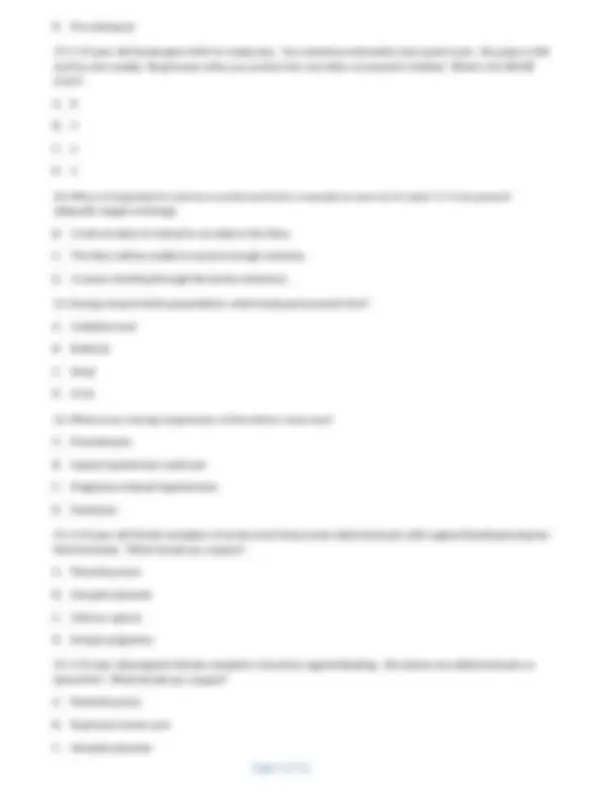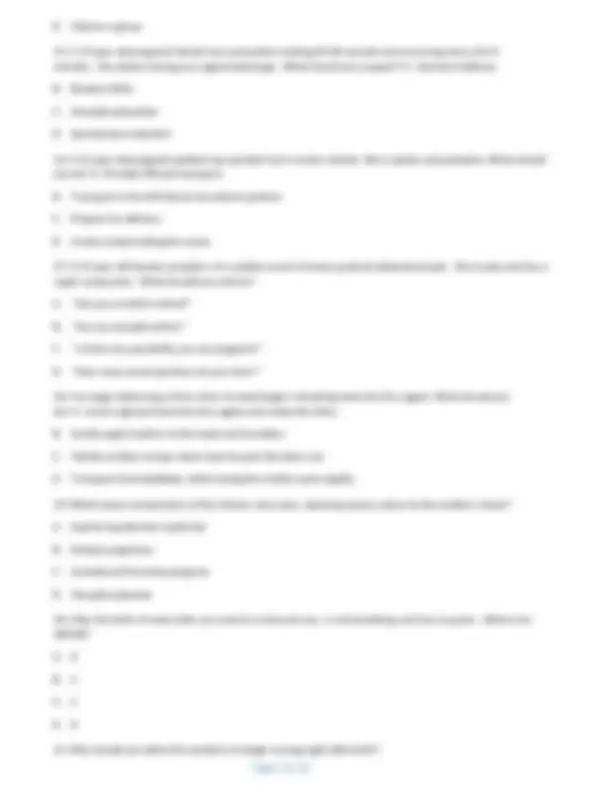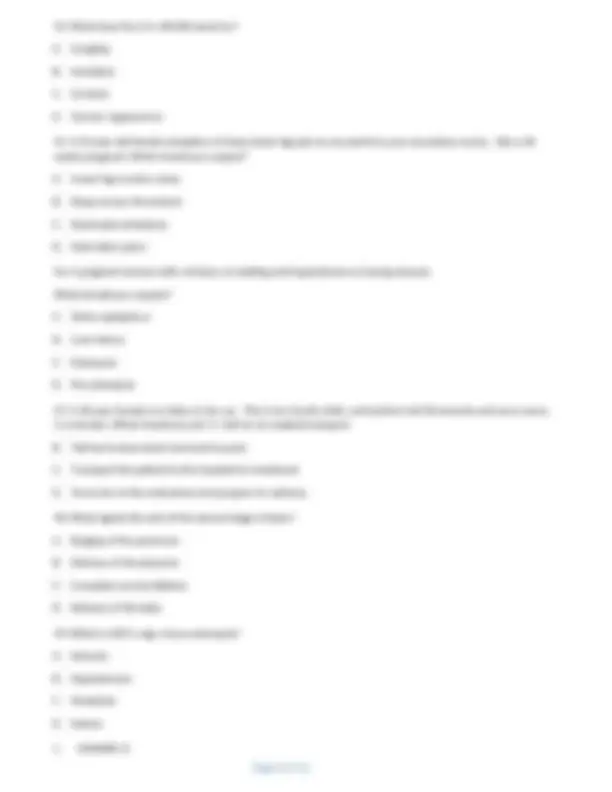








Study with the several resources on Docsity

Earn points by helping other students or get them with a premium plan


Prepare for your exams
Study with the several resources on Docsity

Earn points to download
Earn points by helping other students or get them with a premium plan
Community
Ask the community for help and clear up your study doubts
Discover the best universities in your country according to Docsity users
Free resources
Download our free guides on studying techniques, anxiety management strategies, and thesis advice from Docsity tutors
FISDAP OBGYN Pediatrics & Obstetrics Gynecology Exam Practice Questions with Answers. 1. You notice a brownish green fluid pasing from a 23 year old female while giving birth. What should you do? A. Using a gloved hand prevent the fetus from fully delivering. B. Using a glove hand attempt to visualize the cord for a rupture. C. Stimulate the fetus immediately after delivery. D. Suction the mouth and nose of the fetus after delivery. 2. A 36 year old pregnant female has severe abdominal pain. In what position you transport her? A. Supine with her head slightly elevated. B. Right lateral recumbent. C. In the position of comfort. D. Left lateral recumbent. 3. Which of the following women is most likely in the first stage of labor? A. A woman whose contractions occur five minutes apart and last sixty seconds. B. A woman who feels a strong pressure and an urge to bear down. C. A woman whose contrac
Typology: Exams
1 / 10

This page cannot be seen from the preview
Don't miss anything!







A. Eclampsia B. Emboli C. Hemorrhage D. Stroke
D. Pre-eclampsia
D. Uterine rupture
C. Seizures D. High blood glucose
Powered by TCPDF (www.tcpdf.org)